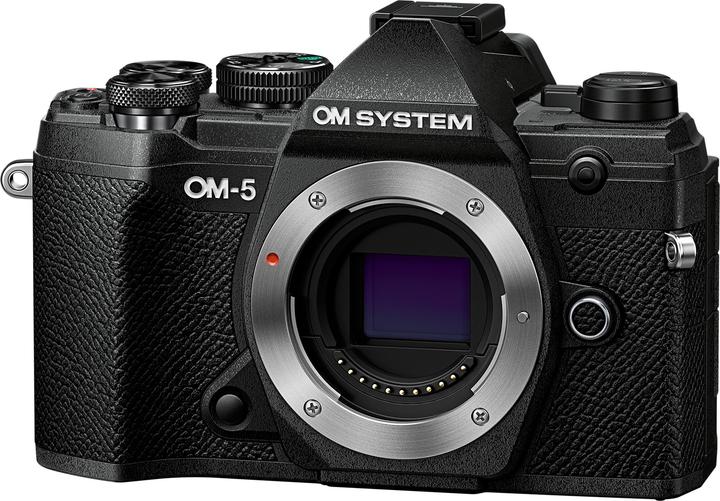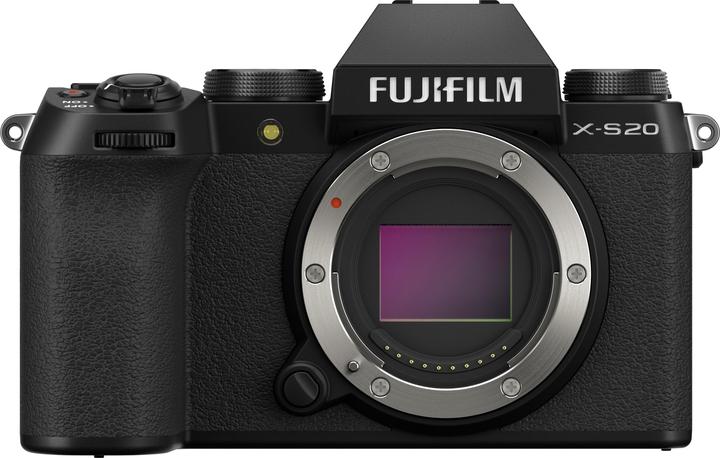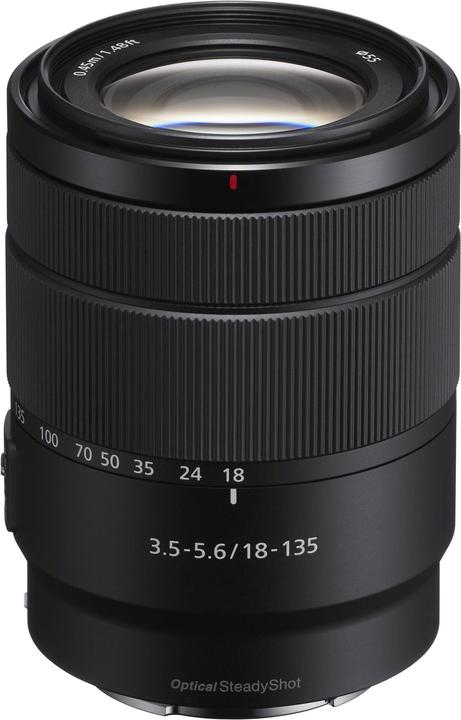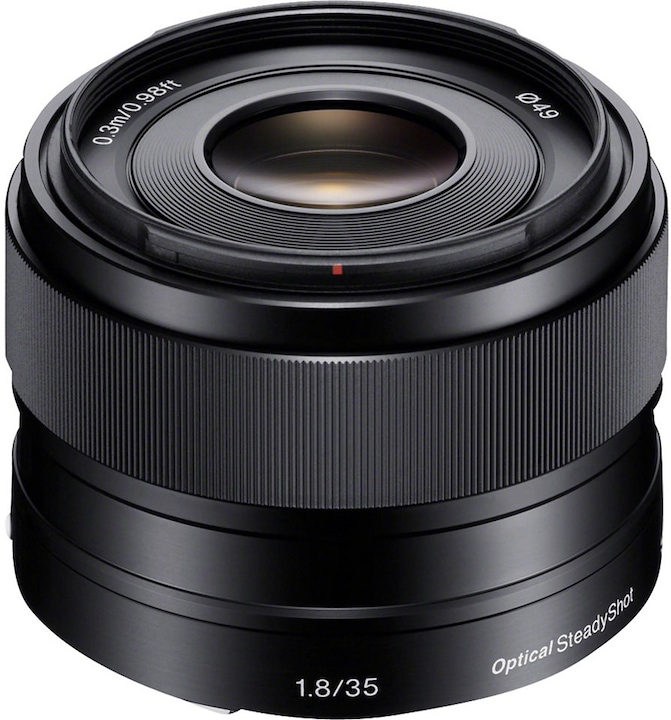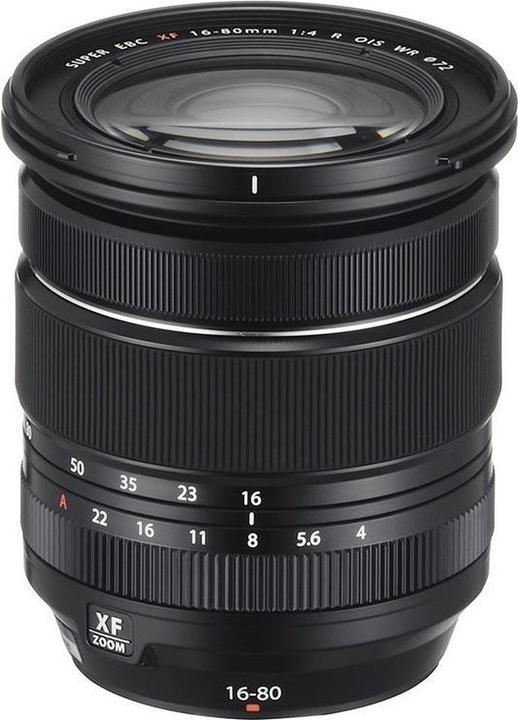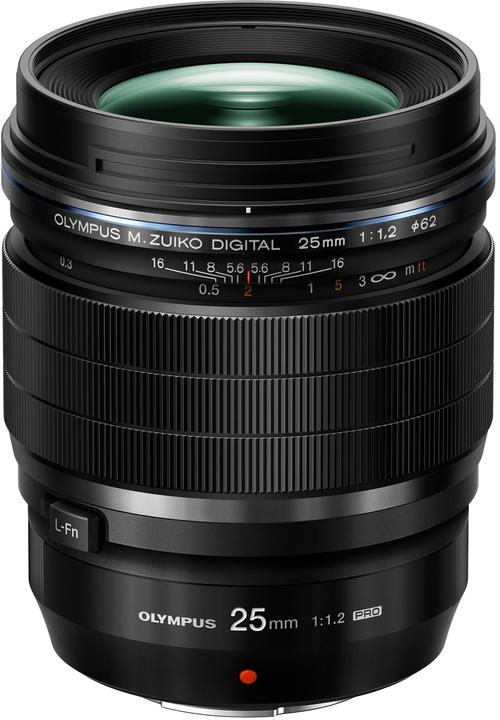

What’s the best travel camera? Three models tried and tested
Just in time for the summer holidays, Sony is set to launch the Alpha 6700, a compact interchangeable lens camera with an APS-C sensor. I pitted it against rivals from Fujifilm and OM System in a battle for the title of «best travel camera».
The summer holidays are right around the corner. Travellers looking for more options and better image quality than they’d get with a smartphone often go for small interchangeable lens cameras. As well as having a prime lens or compact superzoom, they’re inconspicuous and easy to carry. I’ve tested three current models and drawn a direct comparison between them: the brand new Sony Alpha 6700, the OM System OM-5 and the Fujifilm X-S20.
I get two lenses for each camera: a travel zoom and a fast standard prime lens. In doing so, I go for lenses I’d buy myself. Basically, I opt for a generalist’s zoom and a prime lens suited to playing with the depth of field. On average, the kits all cost roughly the same. One brand’s camera is slightly more expensive, while the others charge more for the lenses.
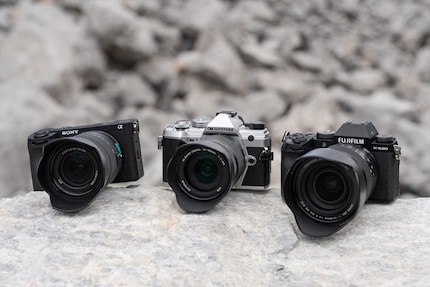
Source: Samuel Buchmann
I’ve divided my camera comparison into different categories, giving the devices an intermediate rating at the end of each section. This way, you’ll be able to make your own overall judgment, depending on what’s particularly important to you in a camera.
Here’s a summary of some of the specifications:
Design and ergonomics: retro vs. simple
When I first open the backpack containing the three test cameras, I instinctively grab the Fujifilm X-S20. It gives off a certain retro charm that I like. At the same time, it has a sufficiently large, well-formed grip that makes it comfortable to hold. My pinkie is the only part of my hand there’s no space for, as is typically the case when I use small cameras.
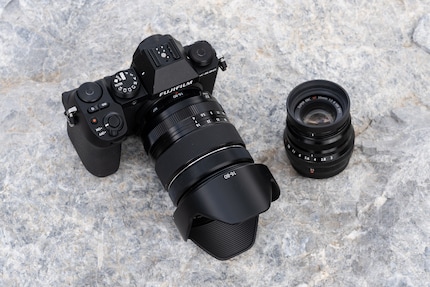
Source: Samuel Buchmann
I also like the look of the OM System OM-5, especially in silver, the colour of my test device. Like the Fujifilm, its design is similar to that of classic cameras. However, the small indentation and thumb grip don’t give me enough to hold on to. Holding the OM System wasn’t comfortable for me, a person with medium-sized hands.
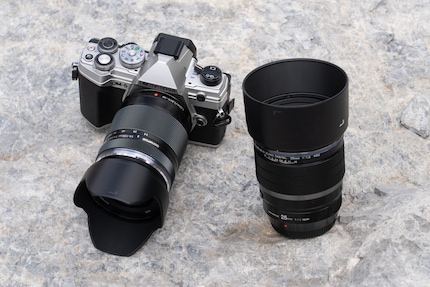
Source: Samuel Buchmann
The Sony A6700 is anything but retro; its design has been kept as simple as possible. Instead of raised at the centre, the electronic viewfinder (EVF) is located on the left, directly above the display. The mode dial, meanwhile, is embedded in the housing. While this design may seem a bit humdrum, it’s functional. It makes the camera more compact, and it doesn’t get stuck on anything. Sony has improved the grip relative to the camera’s predecessor. It’s equally as good a fit for me as the Fujifilm.
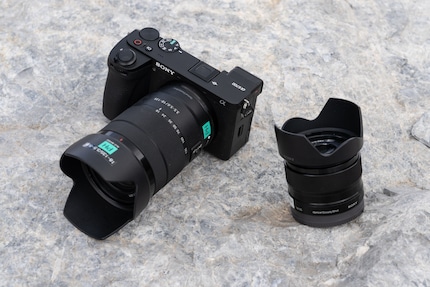
Source: Samuel Buchmann
As I give more weight to the ergonomics of a camera than a stylish look, the OM System winds up in last place in this category. The other two finish neck-and-neck.
1st place: Sony A6700, Fujifilm X-S20
2nd place: OM System OM-5
Points to the OM System for size and robustness
The OM System’s sensor is smaller than that of the other two cameras. Its body, however, is practically the same size and weight as those of its rivals. The lenses are the only more compact element, depending on the model. The 14-150 mm in particular is extremely small for its focal length. Of the three cameras, the OM-5 is the only one with an IP53 rating. This means it’s protected against dust and water droplets.

Source: Samuel Buchmann
Neither the Sony nor the Fujiflm has a rating like this, so I’m forced to rely on the manufacturers’ description of the cameras as «weather-resistant». That being said, both devices seem robust, and they’re unfazed when I use them to take pictures in the rain. What I find unfortunate about Sony is that neither of my lenses has a rubber bayonet seal. The extra cost generated by fitting one would be tiny, and it’d prevent water from getting in at this part of the camera. While the four lenses I’ve chosen for the OM System and Fujifilm all have a seal like this, Sony only installs them on pricier lenses.
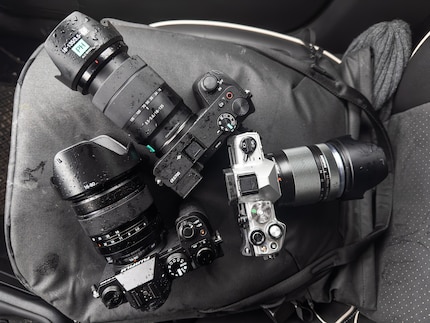
Source: Samuel Buchmann
If having top-notch weather protection is important to you, the OM System is your best bet. On the other hand, minor downpours won’t give you any cause for concern with the Sony or Fujifilm either. The OM-5 also has the edge when it comes to compactness.
1st place: OM System OM-5
2nd place: Sony A6700, Fujifilm X-S20
No clear winner in the lens category
Rating the selection of lenses is complicated. Sony’s line of lenses is by far the largest, but most of them are built for full-frame sensors. Though they work with APS-C cameras such as the A6700 too, they’re unnecessarily large and heavy. If I only take dedicated APS-C lenses into account, the selection narrows. Fast prime lenses in particular are hard to come by. At least the 35 mm f/1.8 I’m testing is good and lightweight. What’s more, the 18-135 mm f/3.5-5.6, at just two years old, strikes the right balance between quality, price and size for me.
I can’t find a good equivalent from Fujifilm. There’s the XF 18-135 mm f/3.5-5.6, but it’s outdated and not particularly sharp. I decide to go for the 16-80 mm f/4 instead, which sports a fixed aperture and slightly more wide-angle. I’m still not completely happy with it, because I’d like more zoom – and the lens is big and heavy for an APS-C lens. Browsing the prime lenses, however, I find a huge selection of cute little high-quality lenses. I’m particularly taken with the f/2 versions. The 35 mm f/2 I’m testing is smallest in this comparison.
OM System’s selection is roughly the same size as Fujifilm’s. The telephoto lenses especially are more compact. Since the Micro Four Thirds (MFT) sensor is smaller than APS-C, the lenses should also deliver a smaller image circle. MFT extends the focal length by a factor of two. That means 400 millimetres is equivalent to 800 millimetres on a full-frame camera and about 530 millimetres on an APS-C camera. As a result, MFT systems can come in especially handy for wildlife photography. The 14-150 mm f/4-5.6 is also the smallest travel zoom of the lot, but has the widest focal range. Unfortunately, this translates into mediocre image quality. With the 25 mm f/1.2, however, it’s the complete opposite – it’s sharp and fast, but also relatively large.
Overall, the lens range that’ll suit you best will depend on your preferences. Sony wins me right over with its combination of best travel zoom and compact 35 mm. If you want the smallest possible set of equipment for wildlife photography, you’ll probably be happier with the OM System. Fujifilm has the largest range of prime lenses. Incidentally, I’m only talking about own-brand lenses here. You’ll get a wider selection if you consider getting ones from third-party manufacturers such as Sigma or Tamron. They also have good APS-C-specific lenses in their ranges.
1st place: Sony A6700, Fujifilm X-S20, OM System OM-5
Operating the cameras takes some getting used to
I spend my test day switching between the three cameras, always needing a moment to adjust to each device. Each brand has slightly different controls. The menus don’t cause me any noteworthy problems on any of the models, though the OM system uses an ancient structure that feels like a maze at times.
I feel most comfortable using the Sony – I can reach all of the functions with my right hand via logically labelled buttons. On the other hand, the button pressure points could be clearer. I don’t like the position of the dial on the front; I have to bend my index finger in a strange way to reach it. Although I find the viewfinder’s position unusual, I don’t dislike it. There’s also an individual switch for video recording, which is brilliant.
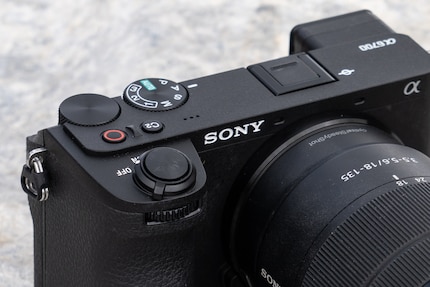
Source: Samuel Buchmann
I like the workmanship and button pressure points on the Fujifilm best. They click reliably, and I’m able to feel exactly when I’ve pressed something. However, for two reasons, the layout doesn’t suit me as well as Sony’s. Firstly, I need to use my left hand to reach the playback button. That’s annoying. Secondly, Fujifilm has fitted the camera with a joystick instead of a dial. Although this is good for selecting the focus point, it’s less precise for everything else.
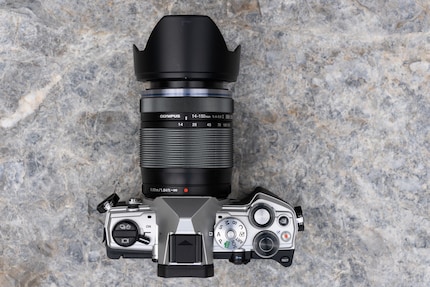
Source: Samuel Buchmann
OM System has gone for a different front dial placement than the other two manufacturers – it surrounds the shutter button on the top of the camera. This works wondrously. What’s more, the grooves on the dial are very grippy. As for the haptics, it’s somewhere between Sony and Fujifilm. In my view, the layout comes in last place. I find the On button’s left-hand position impractical – I want to be able to turn a camera on and off with one hand. The ISO button at the very top right is also awkwardly placed – if I want to reach it with my thumb, I have to loosen my grip.
The pros and cons of the controls on each camera pretty much cancel each other out on balance. You get used to each model after a while, and none of them have any serious weak points.
1st place: Sony A6700, Fujifilm X-S20, OM System OM-5
Viewfinder and display: which is more important to you?
The Sony A6700 has the largest and clearest electronic viewfinder, even if it its resolution isn’t higher than those of the other two. Like with the OM System OM-5, I only have the choice between completely manual or completely automatic when it comes to brightness. The Fujifilm X-S20 also lets me adjust the auto brightness. However, its viewfinder is the smallest of the trio, and has barrel distortion. This makes the edges slightly warped. Primarily because of its small size, the Fujifilm’s viewfinder comes in last place.
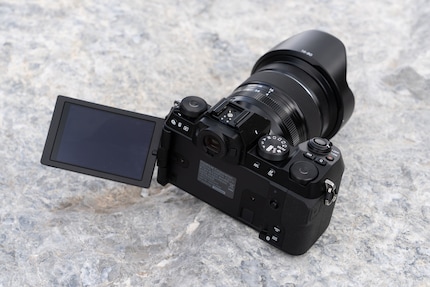
Source: Samuel Buchmann
When it comes to the displays on the back, the rankings flip. The Fujifilm comes up trumps in this regard with 1.84 million pixels, while the other two are left to get by with 1.04 million. To me, Sony’s display seems to be the hardest to read in sunlight. At least it can be folded out and rotated like the other two models. A handy feature, in my book.
The bottom line is that none of the cameras have a viewfinder or display great enough to excite me – something I guess is down to the price range they’re in. That being said, they’re not poor enough to bother me. On the whole, the strengths and weaknesses of the three models pretty much balance each other out.
1st place: Sony A6700, Fujifilm X-S20, OM System OM-5
Autofocus: Fujifilm catches up with the competition
Fujifilm has improved the autofocus of the X-S20 compared to the previous model. The camera focuses gratifyingly fast, and I have the option to make the camera recognise different types of object. I decide to give people and motorbikes a whirl. Tracking the former works well, with the Fujifilm reliably homing in near people’s eyes. Motorbikes, on the other hand, give it a bit of trouble. The autofocus also lets me down a few times when it’s foggy.
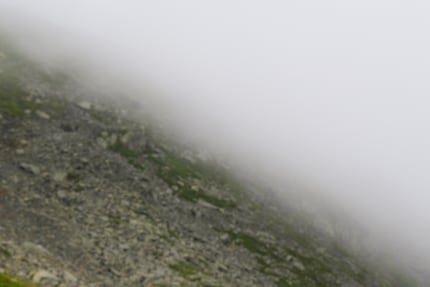
Source: Samuel Buchmann
The Sony A6700 seems a touch less tricky in this regard. It’s kitted out with the new BIONZ XR processor, which is designed to automatically recognise subjects better via artificial intelligence (AI). Whether or not the AI really plays a decisive role here is unclear, but the camera really does almost always capture what I want it to. All without me having to adjust anything manually. Sony’s autofocus seems unshakeable and impeccable. It’s still the gold standard.
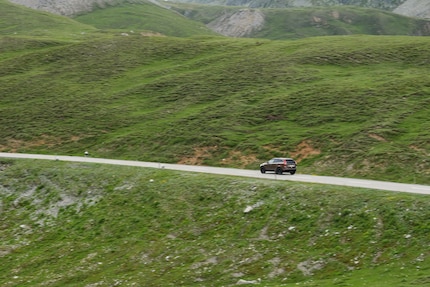
Source: Samuel Buchmann
Unfortunately, the OM-5 doesn’t have the very good autofocus of the larger OM-1. This means the OM-5 only recognises human faces. Too bad, given the camera’s small lenses would make it well-suited to wildlife photography. I can select objects using the touch screen, which are then tracked. But this isn’t especially convenient or quick. All in all, the compact OM System’s autofocus system isn’t playing in the same league as those of its competition.
1st place: Sony A6700
2nd place: Fujifilm X-S20
3rd place: OM System OM-5
Image quality: all good, two better
As Lightroom doesn’t support RAW images taken on the Sony A6700 at the time of my review, I only compare the cameras’ JPEGs for the sake of fairness. These results are only valuable to a limited extent. However, because I was adamant about publishing this review before the summer holidays, you’ll get my first impressions of the cameras’ image quality here.
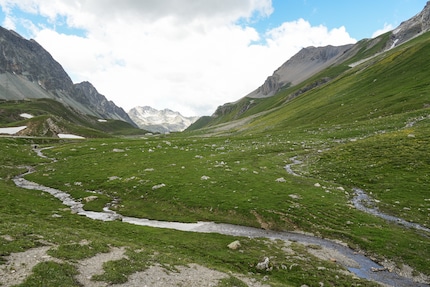
Source: Samuel Buchmann
Doing a control tests in good light, I see little difference between the three cameras. I decide to shoot with prime lenses and an f/5.6 aperture. The Sony, Fujifilm and OM Sytem manage to distinguish similarly fine details. The OM-5 has six fewer megapixels than the other two, but it makes practically no difference.
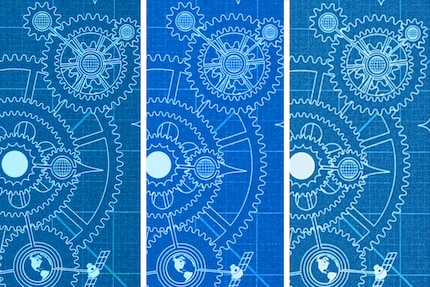
Source: Samuel Buchmann
It’s only at high ISO values that the MFT camera’s smaller sensor becomes noticeable. When I turn off the noise filter on all three test cameras, the Fujifilm X-S20 and Sony A6700 are less grainy.
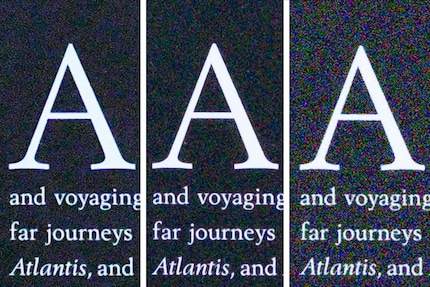
Source: Samuel Buchmann
The same goes for the dynamic range. Subjectively, all the cameras’ dynamic ranges have similar reserves at ISO values up to 400. At higher sensitivities, the two APS-C cameras have a slight advantage. With JPGs, light areas generally take less time to burn out than dark areas take to turn completely black. This considered, I prefer underexposing a little if in doubt.
As soon as I swap the fixed focal lengths for travel zooms, the lens becomes an obstacle. I’m particularly disappointed with the Fujinon XF 16-80 mm. The lens isn’t very sharp at the wide and long ends, even when I stop down. Sharpness improves at medium focal lengths. The Olympus ED 14-150 mm grapples with similar issues. Given its huge zoom, however, I’m more forgiving of that. The Sony E 18-135 mm covers a wider range than the Fujinon and less than the Olympus – and it’s sharper than the competition across all focal lengths.
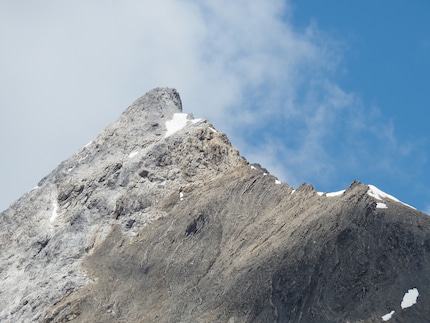
Source: Samuel Buchmann
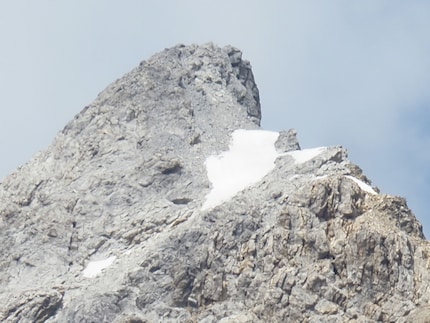
Source: Samuel Buchmann
Despite all of that, I’d like to say one thing in defence of the OM System OM-5: I’m a fan of its 4:3 aspect ratio. The 3:2 images of the other cameras are often too narrow for me, especially in portrait format. Of course, they can be trimmed, but that costs you resolution. Because this is a personal preference, I’m not factoring this difference into the camera ratings for this section. The MFT camera takes third place by a small margin, with the other two cameras sharing the top spot.
1st place: Sony A6700, Fujifilm X-S20
3rd place: OM System OM-5
Video: OM System falls behind
If it’s a hybrid camera you’re after, you can decisively rule out the OM System OM-5. It shoots in 4K at up to 30 fps, in 8-bit only, with a 1.19× crop. That means it offers fewer fps and less dynamic range than the competition. The autofocus seems sluggish, often catching my forehead instead of my eyes in the test shot. Its mode of operation is also clearly targeted towards photography.
In this aspect, Fujifilm X-S20 is on a whole different level. It can do 4K at up to 60 fps, or up to 30 fps without crop. The recordings are in 6.2K, with 30 fps in 3:2 format, which is unusual for a camera in this price range. I can later crop these to the usual 16:9 ratio in 4K without any loss of quality. 10-bit 4:2:2 is available for all resolutions and frame rates. The Fujifilm’s improved autofocus also pays off during video photography – the focus point latches on to my eye more effectively than with previous models. However, the camera sometimes shifts the focus jerkily.
The Sony is better at this. The A6700’s focus always sits where it’s supposed to, even in videos. When I move, the focus follows smoothly and quickly. This is matched by an outstanding range of frame rates: the compact Sony reaches up to 120 fps in 4K. Up to 60 fps, it uses almost the full sensor in oversampling. It’s not until 120 fps that the image is cut out of the sensor pixel by pixel using 1.62× crop. In other words, the A6700 crams the full functionality of the FX30 into a hybrid body. This is outrageously good for this price, and it’s earned Sony the top spot in this category.
1st place: Sony A6700
2nd place: Fujifilm X-S20
3rd place: OM System OM-5
Verdict: a narrow victory for Sony
If it’s any consolation to the losing brands, all of the cameras are enjoyable to use. If you’ve already invested in one system, or are a fan of a certain brand for other reasons, you can’t go wrong with any of the models in this review. They’re nimble, well-conceived and deliver good photos. But you didn’t come here for a wishy-washy verdict like this. What if you don’t have a camera yet? What if you actually want to switch brands?
Time to stop beating around the bush. As far as I’m concerned, the Sony Alpha 6700 is the best camera in this review. It beats the Fujifilm X-S20 by a narrow margin and the OM System OM-5 by a considerable one. The differences in design, operation and displays can be summed up as «a matter of taste». In terms of autofocus, Fujifilm has caught up a little with Sony, but not completely. The compact OM System is further behind in this regard. This also applies to the image quality at high ISO values, where the small MFT sensor’s disadvantage becomes apparent. In good lighting, all of the cameras deliver comparable photos.

Source: Samuel Buchmann
When it comes to travel zooms, I’d say Sony’s 18-135 mm provides the best balance between range and sharpness. The fly in the ointment is the system’s comparatively small selection of APS-C-specific prime lenses. In this regard, Fujifilm especially is better equipped. And if you want long prime lenses, you’ll have the least gear to lug around if you go for the OM System’s MFT lenses. For things like wildlife photography, however, you’d be better off opting for the OM-1, which has better autofocus and proper grip.
As for video, the Sony A6700 clinches the overall victory, with 4K recordings at up to 120 fps and up to 60 fps in oversampling without cropping. Though the Fujifilm X-S20 can do 6.2K, it only reaches 60 fps in 4K. Most importantly, however, Sony’s focus tracking is faster, smoother and more accurate. The OM System OM-5 is the least suited to video photography.
All in all, the Sony Alpha 6700 has the fewest weaknesses and is never a hindrance during use. By the end of the day, I find myself reaching for it almost automatically. It’d be my first choice of travel camera for uncomplicated and good holiday photos.
My fingerprint often changes so drastically that my MacBook doesn't recognise it anymore. The reason? If I'm not clinging to a monitor or camera, I'm probably clinging to a rockface by the tips of my fingers.
